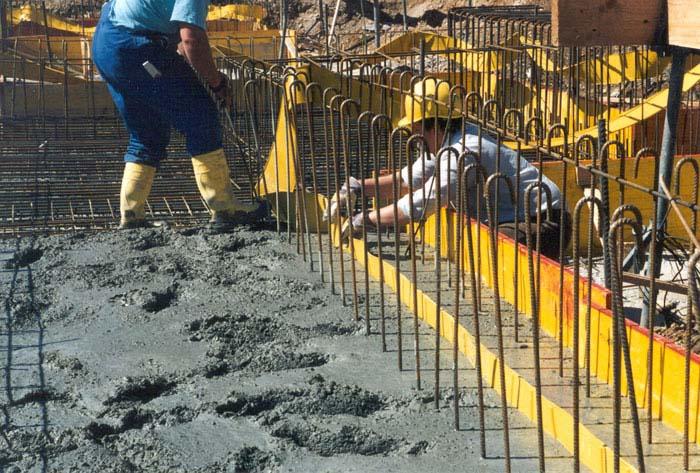Specification for Waterstops In Hydropower Plant
 Installing waterstop during concrete placing
Installing waterstop during concrete placing
Waterstops across contraction joints are necessary to prevent leakage and obtain satisfactory dry operating and working conditions. They are required to exclude water under head in the substructure and to ensure weathertightness of the joints in the superstructure. Material of rubber or polyvinylchloride (PVC) is suitable for this purpose. Extensive experience in the use of molded rubber or extruded polyvinylchloride waterstops in joints of conduits and hydraulic structures have proved the practicability and advantages of using either of these materials. Copper waterstops were used in the past, however, they will fail where yielding foundations or other conditions result in differential movement between monoliths. They are also easily damaged during installation.
PVC or rubber waterstops with a center bulb can withstand this type of movement and are recommended for use in hydroelectric products. A wider width is indicated for waterstops in the substructure where large aggregate is used and higher water pressures exist than for waterstops to be installed in low-pressure areas or for weather-tightness only. Waterstops should be placed as near to the surface as practicable without forming weak corners in the concrete that may spall as a result ofweathering, or impact, and should create a continuous barrier about the protected area
 Waterstops for construction joints (on the left) and for expansion joints (right)
Waterstops for construction joints (on the left) and for expansion joints (right)
.All laps or joints in rubber waterstops should be vulcanized or satisfactorily cemented together, and joints in “PVC” waterstops should be adequately heat sealed. Waterstops in contact with headwater for structures founded on rock should terminate in a recess formed by drilling holes 6 inches deep into the rocks and should be carefully grouted in place. Occasionally, double waterstops are required in pier joints, one on either side of a formed hole, containing bituminous material. In some important locations, two waterstops and a drain should be used to ensure water-tightness.

